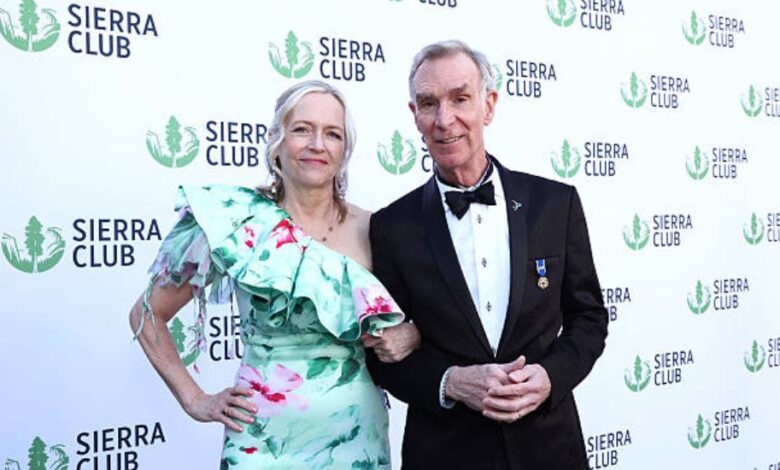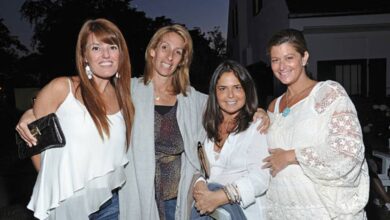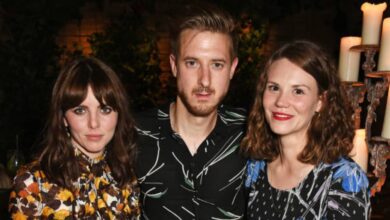
Few writers in modern America have done as much to chronicle the hidden stories of women as Liza Mundy. From uncovering the untold contributions of female codebreakers in World War II to analyzing how gender dynamics are reshaping society, Mundy’s work sits at the intersection of history, policy, and culture. But beyond her writing, Mundy has also captured public curiosity for her personal life — particularly her marriage to scientist and television personality Bill Nye, famously known as “The Science Guy.”
In this in-depth article, we explore who Liza Mundy is, her career achievements, her age, background, family, relationships, and how she came to marry one of America’s most beloved science educators.
Who Is Liza Mundy?
Liza Mundy is an acclaimed American journalist, author, and researcher celebrated for her thoughtful exploration of social issues, gender, and technology. Over the years, she has built a reputation as one of the leading narrative nonfiction voices in America.
Mundy’s work often highlights stories of women who helped shape the course of history — women whose efforts were ignored or forgotten for decades. Her storytelling merges rigorous historical research with compelling human narratives, giving new life to stories that once lingered in the margins of history books.
She is also known for her contributions to The Washington Post, where she worked as a staff writer, and for her research fellowship at the New America Foundation, where she explored issues of family, gender, and work.
Her extensive body of work includes several highly regarded books that examine everything from reproductive technologies to the shifting roles of women in modern society.
Liza Mundy’s Age and Early Life
Born on July 8, 1960, Liza Mundy is 65 years old as of 2025. Though information about her early family life remains largely private, she was raised with a deep appreciation for language, research, and storytelling — influences that would eventually guide her toward a life of journalism and authorship.
She graduated from Princeton University, where she honed her analytical and writing skills, and later earned a master’s degree in English Literature from the University of Virginia. This academic background shaped her ability to weave literature, politics, and history into cohesive, thought-provoking narratives.
While her childhood details are not widely shared, her later work — particularly her focus on gender equity, education, and opportunity — suggests a writer shaped by curiosity, empathy, and a lifelong fascination with the power of women’s stories.
A Career Built on Truth and Transformation
The Washington Post Years
Mundy’s journalistic career took off at The Washington Post, where she became a staff writer and covered an array of topics, from family policy and reproductive rights to technology and culture. Her insightful reporting stood out for its combination of storytelling and social analysis, bringing nuance to issues that were often polarized in public debate.
Her reporting earned multiple accolades and helped establish her as one of the leading journalistic voices on gender, family, and social transformation.
Books That Changed Conversations
Liza Mundy is the author of several best-selling and critically acclaimed books. Each one tackles complex themes — from hidden histories to evolving gender roles — in a way that makes them accessible to general audiences.
1. Code Girls (2017)
Perhaps her best-known work, Code Girls: The Untold Story of the American Women Code Breakers of World War II, revealed how thousands of women were secretly recruited by the U.S. Army and Navy to break enemy codes during World War II.
The book, built on extensive archival research and interviews, not only unearthed forgotten history but also highlighted the role of women in national security at a time when their contributions were systematically overlooked. It became a New York Times bestseller and remains a staple in both classrooms and discussions about women’s history.
2. The Sisterhood (2023)
In her more recent book, The Sisterhood: The Secret History of Women at the CIA, Mundy turned her investigative eye toward intelligence agencies, documenting how women navigated and influenced the male-dominated world of espionage. It received praise for balancing historical detail with vivid storytelling.
3. The Richer Sex (2012)
In The Richer Sex: How the New Majority of Female Breadwinners Is Transforming Our Culture, she examined the shifting economic landscape in which more women were becoming family breadwinners — challenging long-held social norms.
4. Michelle: A Biography (2008)
This book offered one of the earliest and most comprehensive biographies of Michelle Obama, exploring the former First Lady’s roots, values, and rise to global prominence.
5. Everything Conceivable (2007)
Mundy’s deep dive into assisted reproductive technologies explored how new scientific methods were transforming families, ethics, and society.
Themes in Her Work
Mundy’s books and essays share consistent themes — empowerment, equality, and recognition. She shines light on overlooked contributions, particularly those of women in science, policy, and war. Her narrative style blends journalistic precision with emotional resonance, making her both a historian and a storyteller.
Liza Mundy’s Personal Life and Family
Despite her public career, Liza Mundy tends to keep her personal life private. However, her relationships and family have become topics of curiosity since her marriage to Bill Nye.
Marriage to Bill Nye
In May 2022, Liza Mundy married Bill Nye, the well-known engineer, television host, and science educator. Their wedding took place at the Smithsonian Institution in Washington, D.C., a fitting location for two people deeply tied to science, education, and storytelling.
According to People Magazine, the ceremony was officiated by Star Trek actor Robert Picardo, and the event was intimate — attended by close friends and family.
Interestingly, their relationship began because of a shared historical connection: Mundy had written about Bill Nye’s mother, Jacqueline Jenkins Nye, in her book Code Girls. Jacqueline Nye was one of the real-life female codebreakers featured in the book. After reading the mention, Bill Nye reportedly reached out to Mundy, and the two began corresponding — a friendship that eventually blossomed into romance.
Their story beautifully intertwines personal and professional passions: history, science, and women’s contributions to knowledge and progress.
Liza Mundy’s Children
Before marrying Bill Nye, Liza Mundy was married once previously, and she has two children — a daughter named Anna and a son named Robin, according to several biographical profiles.
While she rarely speaks publicly about her children, her daughter Anna was said to have given a heartfelt toast at the wedding to Bill Nye, underscoring the closeness of their family bond.
Her experiences as a mother have also influenced some of her writings on family life, work balance, and women’s roles in caregiving and breadwinning.
Liza Mundy’s Parents and Father
Publicly available records reveal little about Liza Mundy’s parents, and her father’s name and background are not widely documented. Mundy has chosen to keep that part of her life private, focusing instead on her professional achievements and public contributions.
However, her intellectual upbringing and empathy for underrepresented voices suggest she was raised in an environment that valued curiosity and education — traits that have defined her work as both a journalist and an author.
Liza Mundy and Bill Nye: A Meeting of Minds
The union of Liza Mundy and Bill Nye represents more than just a marriage; it’s a meeting of intellect and mutual admiration. Both are known for their passion for knowledge and their ability to communicate complex ideas to wide audiences.
Nye, best known for Bill Nye the Science Guy, has spent decades teaching science in accessible and entertaining ways. Mundy, on the other hand, has dedicated her career to uncovering and explaining human stories that shape history.
When Mundy wrote Code Girls, she indirectly highlighted the contributions of Nye’s mother, Jacqueline Nye, who worked as a U.S. Navy cryptanalyst during World War II. The discovery of that connection led Nye to email Mundy, thanking her for recognizing his mother’s contributions — and that simple message became the start of their relationship.
In interviews, friends describe their partnership as one built on “mutual respect, intellect, and humor.” They are often described as a “perfect intellectual pair” — two people whose love for learning is at the core of their relationship.
Liza Mundy’s Net Worth and Achievements
Exact figures regarding Liza Mundy’s net worth are not publicly disclosed, but several celebrity-biography sites estimate it to be around $1 million USD. This estimate is based on her long career as a journalist, book sales, speaking engagements, and fellowship work.
While the number itself is speculative, what’s undeniable is the value of her contribution to journalism and literature. Her books have not only sold widely but have also inspired countless readers and researchers to look more closely at women’s hidden roles in shaping history.
Mundy’s impact extends beyond her personal wealth — her work has become part of the broader movement to re-examine history through a more inclusive lens. Her writing has appeared in publications such as The Atlantic, Politico, Slate, The Guardian, and The New Republic.
She has also lectured at universities, appeared in television documentaries, and consulted on historical projects related to codebreaking and women’s roles in intelligence.
Liza Mundy’s Writing Style and Influence
Mundy’s writing is distinguished by its clarity, compassion, and meticulous research. She writes about people who were once invisible — women mathematicians, spies, caregivers, and innovators — giving them their rightful place in history.
Her storytelling is not only factual but emotionally resonant. Whether she’s writing about codebreakers or mothers balancing careers, her narratives invite empathy and understanding.
Many of her readers are drawn to the way she merges journalism and history, grounding her stories in evidence while maintaining the flow of literature. Her voice bridges the gap between the rigor of scholarship and the heart of storytelling.
Legacy and Continuing Work
Liza Mundy continues to write, speak, and advocate for historical recognition and gender equality. Her books have inspired adaptations, academic courses, and museum exhibits — especially around Code Girls, which helped reshape how Americans view women’s role in wartime intelligence.
Beyond her writing, she remains a role model for aspiring female journalists and historians who wish to tell stories that matter. She demonstrates that writing can be both investigative and compassionate — a tool for truth as well as empathy.
Conclusion
Liza Mundy stands as a powerful example of how research and storytelling can reclaim forgotten voices. Her career has bridged journalism, history, and advocacy, shining light on the women who built nations, broke codes, and redefined family life.
Her personal journey — from acclaimed author to her marriage with Bill Nye — reveals a woman of depth, intellect, and integrity. Whether writing about Michelle Obama, codebreakers, or CIA officers, she remains committed to the same core mission: uncovering truth and honoring those whose stories deserve to be told.
In the end, Liza Mundy is not just a chronicler of history — she is part of it.
— Written and Published on newslyblogs



